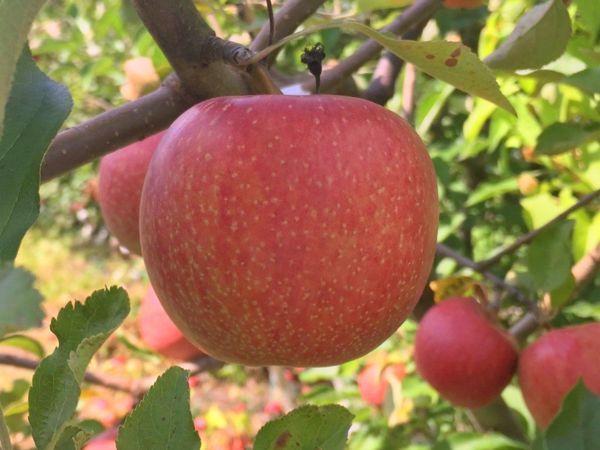An attractive, highly disease-resistant apple, ideal for organic growers.
Spitzenburg Esopus Apple Scionwood (Spring 2024)
An American dessert apple for connoisseurs. Also known as Spitz, Spitzenberg, Spitzenburgh.
This open, spreading tree is not easy to grow; it is susceptible to scab, mildew, canker, and fireblight, and it tends to biennialism without careful pruning.
The fruit of this problem child is, however, well worth the trouble; in Apples of New York, Beach calls Spitzenburg "the standard of excellence for apples of the Baldwin class," and it consistently wins the highest ratings from apple tasters. The mid-sized apple is a beautiful bright red that is speckled with yellow lenticels and its crisp, snappy flesh is yellow. Its flavor, an outstanding combination of sky-high sugars and acids, develops fully after about a month in storage. The complex, floral balance is described by Jacobson in Apples of Uncommon Character as "burnt orange, or Contreau, and (after some mellowing) lychee and roses." A favorite of cider makers, Spitzenburg is also an excellent culinary apple. It will keep well in storage through to spring.
Spitzenburg was a favorite apple of Thomas Jefferson, and he attempted to devote a significant portion of his Monticello orchard to it. It has been known since around 1790 and is a parent of Jonathan.
Volume Pricing
| Quantity | Spitzenburg Esopus Apple Scion |
|---|---|
| 1 | $12.00 |
| 2-5 | $7.00 |
| 6-10 | $6.00 |
| 11-99 | $5.00 |
| 100+ | $4.00 |
The Fruit
Fruit Type
Category: Apple
Subcategory:
Heirloom, Cider, Cold-Hardy
Fruit Uses & Storage
Uses: fresh eating, cider, baking, storage, canning
Cider classification: sweet
Storage duration: three plus months (approximate, depending on storage conditions)
Fruit Appearance
Skin color: red
Flesh color: yellow
Fruit Origins
Parentage: unknown
Origin: Esopus, New York
Introduced in: 1790
Introduced by:
The Environment
Calendar & Geography
USDA zones: 4 - 7
Chill hours: 800
Ripening date: Oct 27 (approximate, in New York State) + 42 days after McIntosh
Diseases & Pests
glossary
Apple Scab: Susceptible
Cedar-Apple Rust: Susceptible
Fireblight: Susceptible
Perennial Canker: Susceptible
Powdery Mildew: Susceptible
Pollination
Pollination Factors
glossary
Bloom group: 4
Is it self-fertile? N
Is it fertile? Y
Ploidy: Diploid
Pollination Partners
This table shows the first few results from a full search for pollenizers of Spitzenburg Esopus Apple. Please see our Pollenizer Search to run other queries and read how the application uses various factors. Also read more about fruit tree pollination.
| Tree | Currently in Stock |
|---|---|
| Virginia Crab Apple | 0 |
| Florina Apple | 0 |
| Porter's Perfection Apple | 0 |
| Elstar Apple | 0 |
| Rubinette Apple | 0 |
| St. Edmund's Russet Apple | 0 |
| Liberty Apple | 0 |
| Mother Apple | 0 |
| Binet Rouge Apple | 0 |
| Freyberg Apple | 0 |
| Bramtot Apple | 0 |
See all pollination matches for Spitzenburg Esopus Apple
Featured Products
A few things we're loving right now...
A full-flavored, freestone white peach.
One of America's oldest apples, good for storage, baking, and cider.
A widely-grown, large, yellow-fleshed nectarine.




















